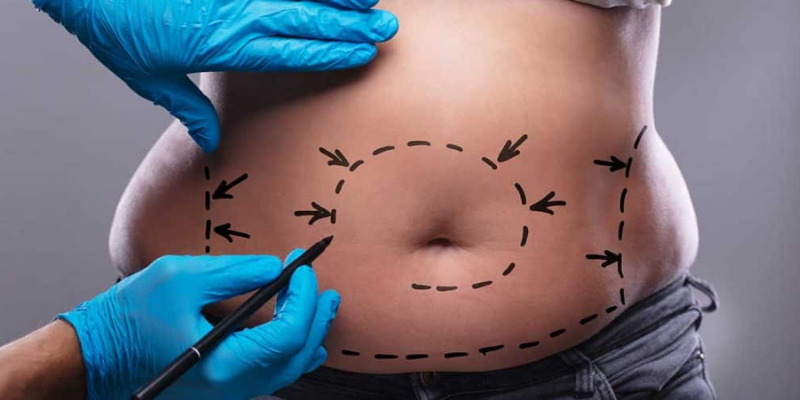Non Invasive Weight Loss Surgery
Non invasive weight loss surgery is one of the most talked-about topics on social media. Everywhere in the globe, obesity is a major concern. Patients who are obese and unable to reduce weight via diet and exercise may benefit from gastric reduction surgery as a solution. Procedures for reducing the size of one’s stomach are available in a variety of methods. One option is weight-loss surgery which does so by restricting caloric intake. Weight loss may be achieved by a variety of methods, including cutting off the absorption of nutrients from the digestive tract. Combining two of these procedures is the third surgical technique that may be used. Surgical treatments have been utilized successfully to treat morbidly obese people over the past ten to fifteen years. The hazards of bariatric surgery are the same as those of any other surgical procedure.
As a result, before deciding on surgery, each patient should have his or her treatment technique examined by his or her doctor, and nutrition therapy should be used first if feasible. Intragastric balloon implantation, sleeve gastrectomy, and gastric bypass are among surgical options for treating obesity. The patient must be between the ages of 18 and 80 and have a physique capable of coping with anaesthesia in order to undergo stomach reduction surgery. A BMI of more than 40, BMI between 35-40, with additional obesity-related disorders such as diabetes and metabolic syndrome, and between 30-35 BMI are all eligible for stomach reduction surgery. Sleeve gastrectomy and gastric band surgery both involve the removal of a portion of the stomach. By removing a portion of the stomach, the patient is able to consume less food, which aids in weight reduction.
Non Invasive Weight Loss Surgery Procedures
A portion of the intestine is also removed during duodenal switch surgery. Absorption is reduced and weight loss happens as a result of the absence of the gut. Open or closed gastric reduction operations are possible (laparoscopically). Because it leaves just a minimal scar, laparoscopic surgery is preferable to open surgery. Unlike open surgery, complications are less common and recovery times are shorter with minimally invasive techniques. In a sleeve gastrectomy, the stomach is removing in its entirety, leaving just the sleeve. Due to the fact that the stomach is reduce to the size of a tube after surgery, patients report feeling satisfying after consuming very little food. This alleviates hunger pangs. This procedure also removes the ‘hunger hormone’-producing portion of the stomach, so you don’t have hunger pangs after eating. Laparoscopic surgery is an option for this procedure.
By removing a section of the stomach, Roux-Y Gastric Bypass surgery creates a new, smaller stomach. By severing a section of your small intestine, it links to the end of your small stomach. The duodenum is connecting to the inactive stomach. As a result, we see the letter ‘Y.’ The majority of the stomach’s function is loosing as a consequence of this procedure. The new little stomach and the segment of the intestine that is linking to it receive nutrients. Remove stomach and most of your intestine in order to minimize the number of nutrients your body absorbs. A tiny pouch is forming in the stomach to restrict food intake. Patients who are obese are more likely to benefit from this procedure since it is riskier than other options. The use of aspirin or aspirin-containing medications and blood thinners should cease at least a week before the procedure.
What Is Non Invasive Weight Loss Surgery?
You should also follow the doctor’s food recommendations for 24-48 hours before the procedure. There is a period of time after surgery in which the patient is keeping under observation at the hospital. While this is going on, the patient is giving pain medication and is continuously monitoring. Because post-operative feeding is gradual, attention is devoting to fluid intake and blood sugar levels are continually monitoring. Following surgery, patients are progressively introduce to solid food, starting with mashing potatoes and working their way up to pure soups. Immediately after surgery, a dietician devises an individualize meal plan. This diet is designing to ensure that you’re getting a healthy dose of nutrients in a well-balance diet. Because the stomach has decrease, the portion sizes have been reduce. In the first three months of treatment, individuals saw significant weight reduction.
For example, a person may lose up to 45 kg in the first three months, but the exact number depends on the kind of surgery they had. People who had previously been diagnose with obesity-relate illnesses prior to the procedure have had their illnesses either entirely cure or reduce to the point where they no longer cause them any discomfort. The dangers of stomach reduction surgery are similar to those of any other surgical procedure. As a result of the weight-loss process and the resulting drooping of the skin, depression, and dumping syndrome (the rapid transport of food and fluids to the gut following gastric bypass surgery) are some of the side effects of the procedure. Older folks, those with blood clotting issues, or those who are obese are more likely to suffer from these effects.
Risks Of The Treatments
The risk of these consequences may reduce if you follow the advice of your doctor and nutritionist. After the procedure, patients continue to lose weight for an additional 18 months. After losing weight, becoming pregnant is not a problem if the diet is changing by a dietician. In the first two weeks after the procedure, you should avoid driving and strenuous physical activity. However, you should not fully give up physical exercise. Walking is possible after the procedure.
As long as your profession does not involve a lot of physical exertion, 2 to 4. After a week, you’re free to return to work. Pilates, yoga, and swimming are permitting activities after the second month. If the patient’s condition warrants it, the doctor may prescribe medicine. A comprehensive nutrition plan is creating by the dietitian. If swelling or redness at the incision sites in the abdomen, unending hiccups, vomiting and fever are observing after discharge, you should consult a doctor immediately.
The Most Non-Invasive Weight Loss Surgery: Does it Even Exist?
Weight loss surgery types are many. However, ‘the most non-invasive weight surgery’ depends on the patient’s health, BMI, and needs. In general, laparoscopic gastric banding is considered one of the least invasive weight loss operations. It inserts a band around the stomach and creates a small pouch to limit calorie consumption and food intake. Laparoscopic gastric banding does not cut nor staple the stomach. The band can be removed if deemed necessary. The complications associated with laparoscopic gastric banding are lower than other weight loss surgery, including causing nutritional deficiencies.

Two other common non-invasive weight loss surgery types are gastric banding and sleeve gastrectomy. They significantly involve low risk and rapid recovery time compared to gastric bypass surgery. Nevertheless, you should discuss all your options with a healthcare provider. You may or may not be eligible for laparoscopic surgery. The gastric sleeve may be right for you, or maybe bypass. The necessary qualifications for weight loss surgery can be determined by your doctor. We hope you learned how the most non-invasive weight loss surgery might be determined and some types of surgery that may help you make an informed decision



